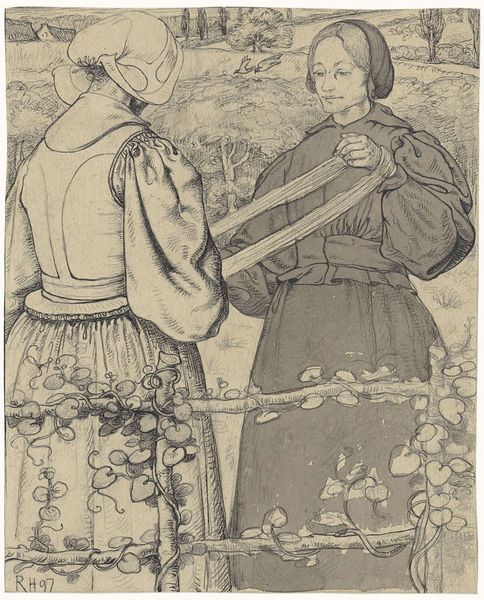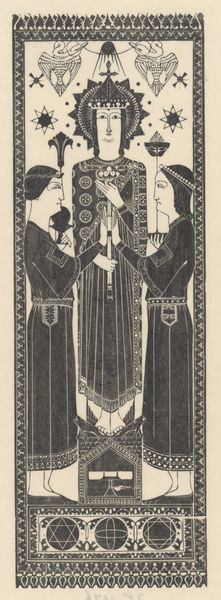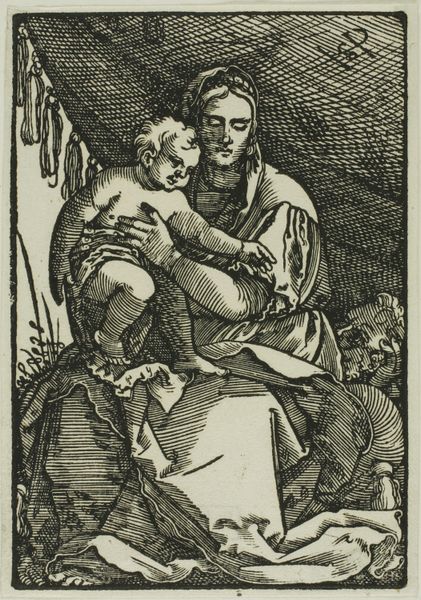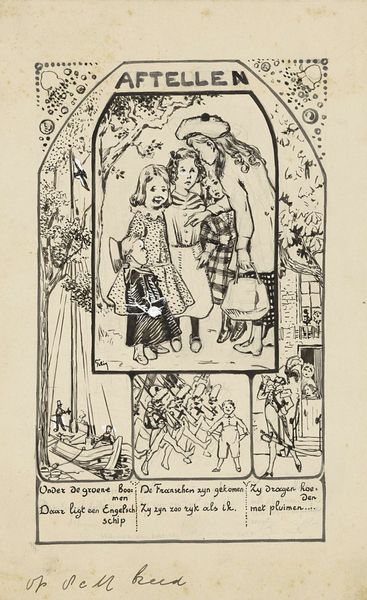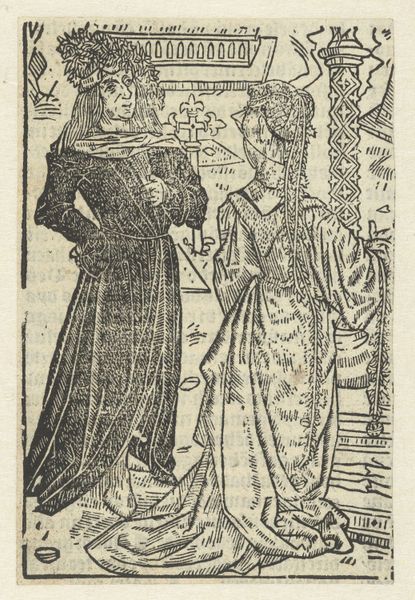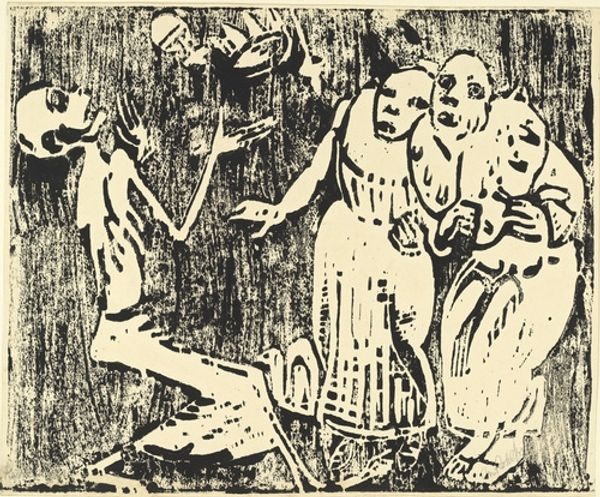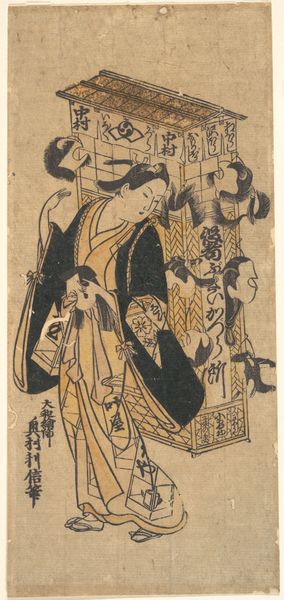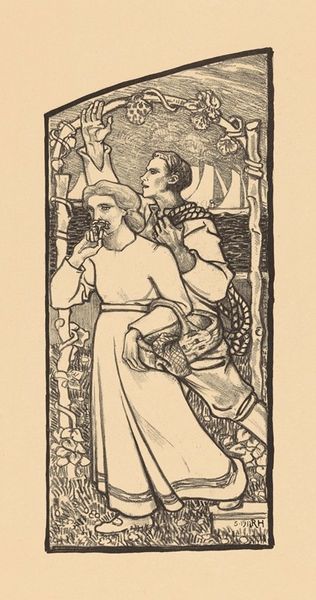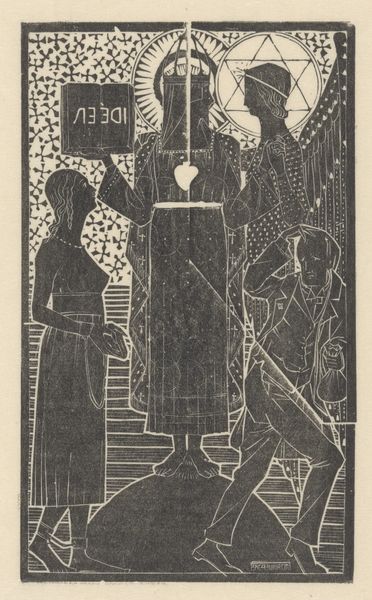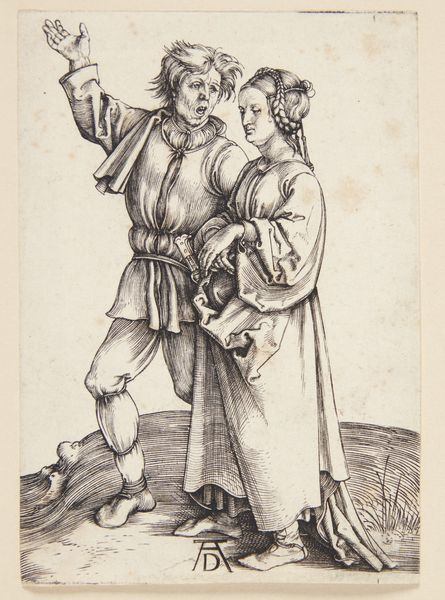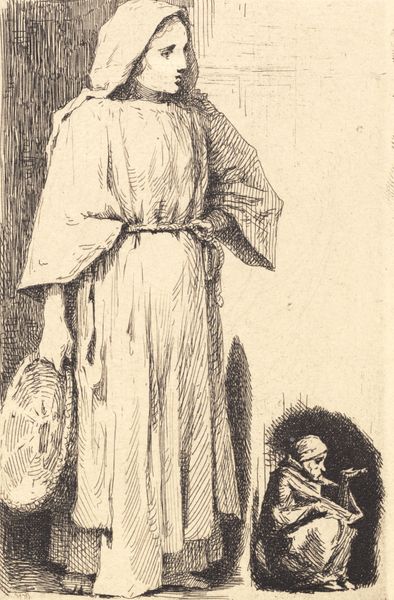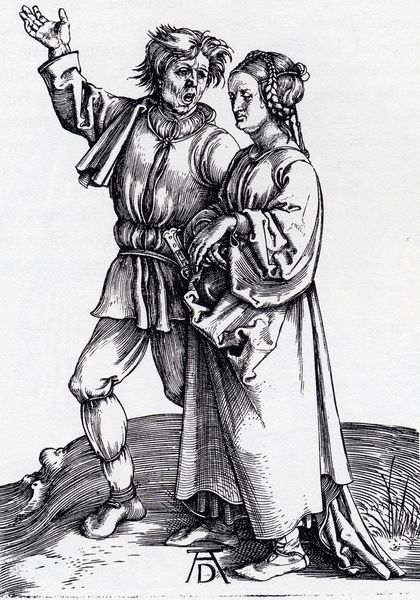
print, linocut, woodcut
#
portrait
# print
#
linocut
#
landscape
#
figuration
#
linocut print
#
woodcut
#
symbolism
#
post-impressionism
Copyright: National Gallery of Art: CC0 1.0
Curator: Standing before us is Armand Seguin's 1894 print, "Three Breton Women with Infants," rendered in a striking linocut technique. It reflects a period of artistic exploration into symbolism and post-impressionism. Editor: Immediately, I’m struck by the stark contrast and the somber mood it evokes. The figures seem weighty, almost monumental despite the print's likely intimate scale. It feels… earthy. Curator: The setting is crucial; Brittany was, for artists of the time, a location of an authentic, "unspoiled" folk culture away from modernity, though that view, of course, papers over the real economic hardships faced by rural communities. Editor: I see what you mean, but I still love the rawness of the lines. The artist isn’t trying to pretty things up; there's a gravity here in their stance, their attire. The babies almost blend in, like part of the landscape. Curator: Exactly. The Breton woman was being presented as intrinsically linked to the land and traditions in contrast to the industrialised modernity of Paris. But look closer. The linocut medium allowed for the mass production of prints and access to broader audiences. It democratizes the art experience. Editor: And there is also such a feeling of distance! Look at the way the figures are facing away, lost in some reverie... it sparks curiosity and also an awareness about what we aren't able to access or know. Curator: That's spot-on. Artists used symbolism to address intangible emotions. But there is something powerful when artists grapple with social realities using these accessible means of production and dissemination, engaging audiences far beyond elite circles. Editor: So while the print shows an image that seems isolated, the medium itself creates connection and dissemination to different audiences... it is about a communal and social aspect. Curator: Indeed, it becomes an intriguing point about the push and pull between artists' subjects, intent, and the broader socio-political landscape, isn't it? Editor: It makes you think about whose stories get told and how. Seguin is reminding me to challenge any romantic assumptions, to consider my own context, and the artwork itself.
Comments
No comments
Be the first to comment and join the conversation on the ultimate creative platform.
